
views
X
Research source
If your horse is sick, consult your veterinarian before bathing the animal.
Preparing the Horse for a Bath
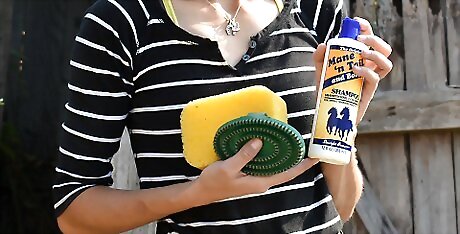
Gather the correct supplies. Properly bathing a horse requires the correct assortment of tools and supplies. Chief among these supplies are a shampoo and conditioner specifically designed for a horse. You will also need an assortment of grooming tools such as a sweat scraper, body brush, curry comb, mane comb, and chamois leather or towels. You will also need access to a water source, obviously, as well as a step stool if your horse is too tall for you to reach its back.
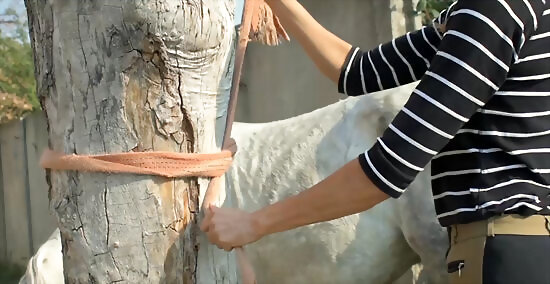
Tie up your horse using a quick-release knot. Choose a place to tie your horse where the water will drain away. Most stables have wash racks or a part of the stable reserved for bathing horses. A quick-release knot (or safety knot) is the best option because a panicked horse can injure itself or damage the barn/fence to which you’ve tied the animal. This type of knot allows you to easily untie the horse with a tug on the knot instead of having to fumble while the horse pulls back on the rope. For instruction on how to tie this type of knot, check out: How to Tie a Quick Release Knot.
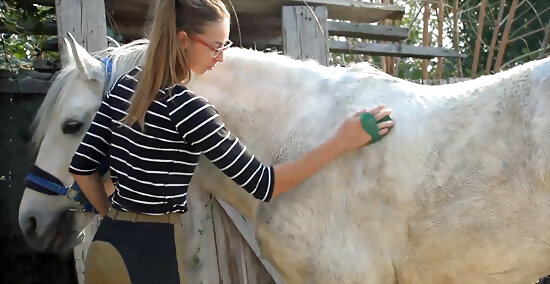
Use the curry comb on the body of the horse. Work the comb in a circular motion to stir up and loosen dirt and debris within the coat. You can then follow with a dandy brush to remove this detritus. A curry comb is a rubber- or plastic-bristled comb that you can use to gently stimulate circulation in the horse’s muscles and skin. The curry comb is usually the first step in grooming, and it loosens dirt and debris from the horse’s coat as well. A dandy brush is a stiff-bristled brush made from synthetic fibers or coarse animal hair. The brush is good for removing the layers of dirt and hair lifted by the curry comb. The brush is also good for removing mud from the horse’s legs and hoof walls.
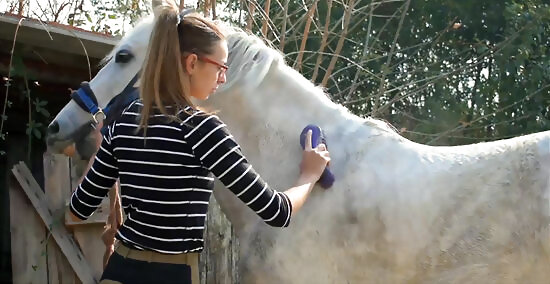
Use a dandy brush on the horse’s legs. Depending on your individual brush, a stiff curry comb can be too harsh for use on the legs, in which case just use the dandy brush on the legs. Brush downward along the lie of the hair to loosen off dried mud.
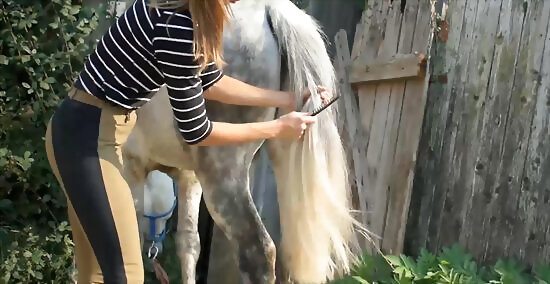
Use a mane comb on the horse’s mane and tail. Use a wide-toothed mane comb to tease out any debris or knots tangled in the mane or tail. For especially tangled knots, use your fingers to work them free, rather than tugging at them with a comb. Never stand directly behind the horse. When combing or washing the tail, stand beside the horse's rump and reach around to the tail. This way if the horse kicks with a back leg you are out of harm's way.
Bathing the Horse
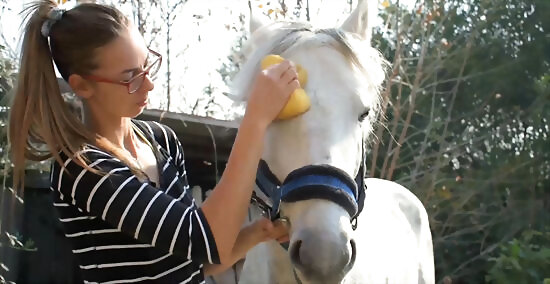
Wash the horse’s face. The horse is likely to be sensitive about having its face washed, so do this first before the rest of the bathing. Soak a sponge or a rag in warm water, then squeeze off the excess moisture. Wipe the face over, following the direction of the hair. Take care when working around the eyes that you don't squeeze water into them. This will upset the horse and cause unnecessary distress. Never use shampoo on the horse's face, just plain water. If the face is very dirty, refresh your bucket of with clean water as many times as is necessary until the rinse water comes away clean.
Wet the horse. It is best to wet the coat all over before applying any shampoo. To wet the horse, you can use a hose, or you can soak a sponge in water and wipe it over the horse's coat. Not all horses are happy to be hosed down. Start with their hooves and slowly direct the water up the legs before wetting the body. This gives the horse time to understand what you intend to do. Don’t squirt the horse with a high-velocity water jet, which is bound to upset the animal. EXPERT TIP Kate Jutagir Kate Jutagir Equestrian Specialist & Trainer Kate Jutagir is an Equestrian Specialist, Hunter/Jumper Trainer, and the Owner of Blackhound Equestrian, a premier training barn located on 65 acres in Castro Valley, California. Originally designed to be a riding school used as a springboard for dedicated students into careers in the sport, Blackhound Equestrian has grown into a hunter/jumper training program for all levels focusing on providing a solid foundation needed for personal advancement in the sport. Kate has over 25 years of equestrian instruction and training experience. Her focus on developing horse and rider partnerships provides a complete equestrian education for both beginners and advanced riders alike. Kate Jutagir Kate Jutagir Equestrian Specialist & Trainer Expert Trick: Start from the horse's legs and move upwards slowly. Trained horses are used to being washed, but younger and more inexperienced horses might react differently to a bath. As you move up the legs, watch for discomfort and stop if the horse seems agitated by the water.
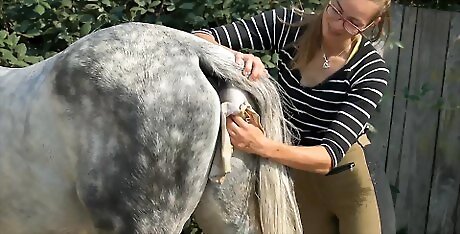
Clean the horse’s anus and genitals. Now is a good time to clean the sheath in a male horse and around the anus regardless of the gender of the horse. For this, use clean wads of cotton wool or a clean cloth that you save just to wash these areas. Use a separate cloth for the anus as for the sheath. Washing the sheath and penis of a male horse requires gentle sponging and rinsing of the area. You should also check the horse’s penis for potential abnormalities. You can find more information about the washing and examination process at: How to Clean the Sheath of a Horse For the anus, simply dampen the cloth with water and wipe. Use a fresh area of the cloth when the first area becomes soiled. Keep gently wiping until the cloth comes away clean. Never stand directly behind the horse to wash the anus. Always stand to one side.
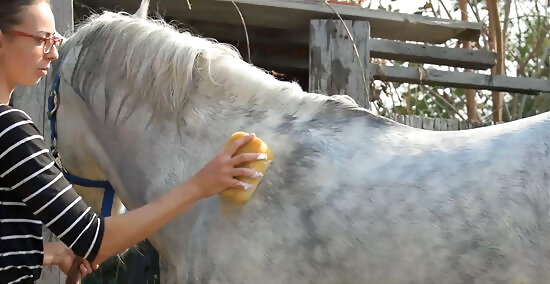
Shampoo the horse’s coat. Once the coat is wet, apply a coin-sized amount of shampoo (as directed on the individual product) to a wet sponge and work it into the coat. You will likely need to repeat this several times depending on the horse's size. You may also want to shampoo the horse’s body in sections because the shampoo can lead to a dry, dull coat if is sits long enough to dry. Shampoo is not always necessary. Be cautious about shampooing too frequently since it may strip the horse's coat of valuable oils that help to waterproof the coat in bad weather. If the horse is a show animal and needs shampooing more than once a month, then you might need to think about stabling the animal as their natural ability to cope in bad weather is undermined.
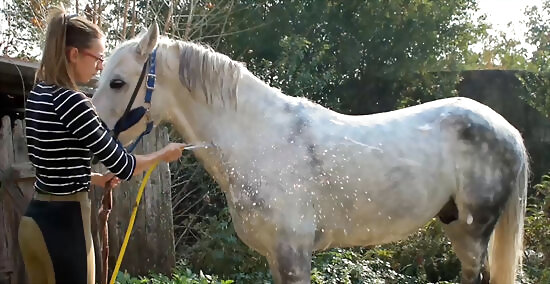
Rinse the horse. Shampoo left in contact with the skin can irritate or dry it, leading to a dull coat. Always rinse the shampoo off well. To do this, either use a clean bucket of water and repeatedly rinse the coat with a damp sponge until no more foamy residue remains, or you can also gently hose the horse off.
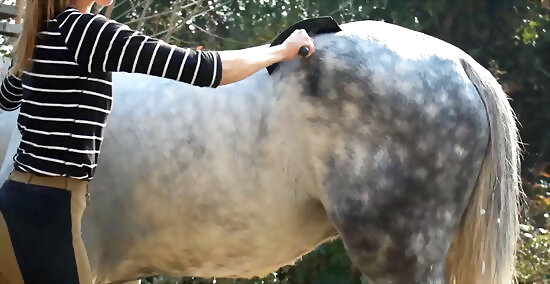
Dry the horse. Once satisfied the water running off the horse is clear and there is no shampoo residue left, you are ready to stop rinsing and dry the horse. One option is to use a sweat scraper and to move it in the same direction as the hair. This squeezes the excess water from the coat. If you don't have a sweat scraper, you can use the edge of your hand to "squeegee" the water away. Alternatively, use several clean dry towels to wipe the entire horse over and dry it off. When you are satisfied the horse is as dry as possible, walk it for ten minutes or so in the sun. If it's clouded over, put an anti-sweat sheet or cooler blanket on the horse.
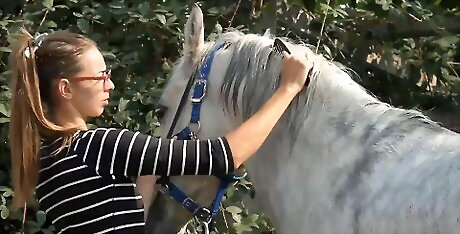
Carefully comb your horse's mane. Don't try to comb out knots. Undo them with your fingers, and then gently comb the mane.
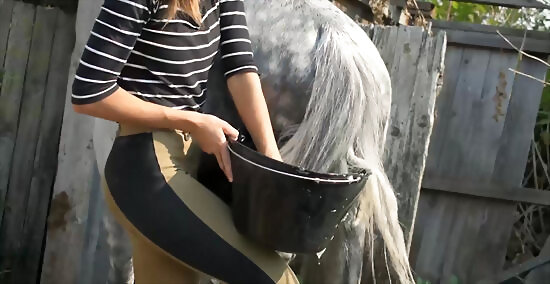
Wash the tail. You should clean your horse's tail as well, especially if it is a pale color. Because washing the tail doesn't chill your horse, you can wash it any time. Hold the bucket of warm water and shampoo up with one hand. With the other hand, lift the horse's tail into the bucket and then hold the bucket about level with the horse's dock. Clean as much of the tail as possible. Swish the tail in the bucket, squeezing the dirt out. You can clean the top of the tail using a sponge dipped in warm water mixed with shampoo. Rinse the tail off in several buckets of clean water. Dip the sponge into clean water and clean the top of the tail. Dry off the tail with a towel. Let the horse graze in a sunny place to let the tail dry off. Again, never stand directly behind the horse. Stand beside the horse’s rump and reach back with the bucket to avoid any potential kicking.










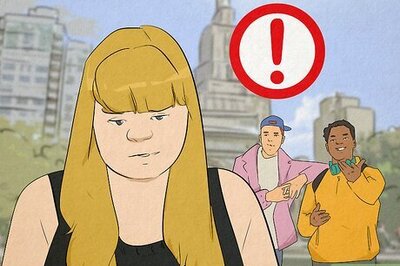








Comments
0 comment